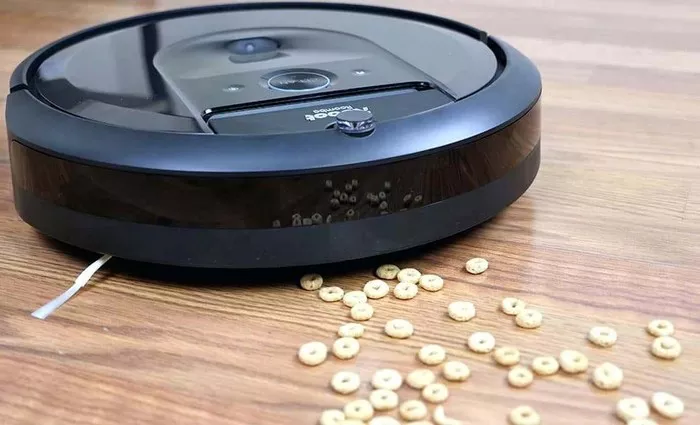Vacuum cleaners are indispensable tools for maintaining cleanliness and hygiene in our homes and workplaces. However, encountering a situation where your vacuum is blowing out dust instead of efficiently collecting it can be frustrating and perplexing. Several factors could contribute to this issue, ranging from simple maintenance oversights to more significant mechanical issues. In this comprehensive guide, we’ll delve into the common reasons why your vacuum might be blowing out dust and provide practical solutions to address them.
Common Causes of a Vacuum Blowing out Dust
1. Clogged Filters and Air Passages: One of the primary reasons for a vacuum spitting dust is the accumulation of debris in its filters and air passages. Over time, dirt, hair, and other particles can clog the filters and obstruct the airflow, causing the vacuum to expel dust instead of sucking it in.
2. Malfunctioning Setup: Incorrect assembly or installation of vacuum components can also lead to dust blowing out of the machine. This includes improperly attached hoses, loose connections, or misaligned parts, which can disrupt the vacuum’s suction power and result in dust leakage.
3. Ripped or Poorly Fitted Dust Bags: If the dust bag in your vacuum is torn or not properly secured, it can allow dust to escape back into the air during operation. Additionally, using a bag that is incompatible with your vacuum model or is overfilled can lead to similar issues.
4. Damaged Seals and Connections: Leaks in the vacuum’s seals or connections can compromise its suction efficiency and cause dust to be expelled instead of collected. Inspect the seals around the dust compartment, hose connections, and other critical areas for any signs of damage or wear.
5. Incorrect Mode Usage: Some vacuum cleaners come with multiple cleaning modes or settings for different surfaces. Using the wrong mode for the type of flooring you’re vacuuming, such as using the carpet mode on hardwood floors, can result in inadequate suction and dust expulsion.
Troubleshooting and Solutions
Now that we’ve identified the common causes of a vacuum blowing out dust, let’s explore the steps you can take to troubleshoot and resolve this issue:
1. Regular Maintenance: To prevent clogs and airflow obstructions, make it a habit to clean or replace your vacuum’s filters according to the manufacturer’s recommendations. Check and clear any debris from the air passages, hoses, and brush rolls regularly.
2. Proper Setup and Assembly: Ensure that all components of your vacuum are correctly assembled and securely attached before each use. Refer to the user manual for guidance on proper setup and installation, especially if you’re using attachments or accessories.
3. Inspect and Replace Dust Bags: Check the condition of the dust bag regularly and replace it if it’s torn, damaged, or overfilled. Make sure the dust bag is compatible with your vacuum model and correctly installed to prevent leaks.
4. Seal and Connection Maintenance: Inspect the seals and connections of your vacuum for any signs of wear or damage. Replace worn seals or tighten loose connections to ensure airtight operation and optimal suction performance.
5. Use the Correct Cleaning Mode: Select the appropriate cleaning mode or setting based on the type of flooring you’re vacuuming. Follow the manufacturer’s recommendations for optimal cleaning performance and dust containment.
Conclusion
A vacuum blowing out dust instead of effectively collecting it can be a frustrating experience, but it’s often a solvable problem with the right troubleshooting steps. By identifying common causes such as clogged filters, malfunctioning setup, damaged dust bags, compromised seals, and incorrect mode usage, you can take proactive measures to address the issue and restore your vacuum’s performance. Regular maintenance, proper setup, and conscientious use are key to ensuring that your vacuum operates efficiently and keeps your surroundings clean and dust-free.
FAQs
Q1: Why does my vacuum smell like burning dust?
A1: A burning smell coming from your vacuum could indicate overheating due to a clogged filter or brush roll, worn motor brushes, or a damaged belt. Turn off the vacuum immediately and inspect for any blockages or overheated components. Clean or replace the filter and brush roll if necessary, and ensure proper airflow to prevent overheating.
Q2: How often should I replace my vacuum’s filters and dust bags?
A2: The frequency of filter and dust bag replacement depends on several factors, including the vacuum model, usage frequency, and the amount of debris collected. As a general guideline, it’s recommended to check and clean reusable filters monthly and replace disposable filters and dust bags every 1-3 months or when visibly dirty or full.
Q3: Can using the wrong cleaning mode damage my vacuum cleaner?
A3: Using the wrong cleaning mode on your vacuum cleaner may not necessarily damage it immediately, but it can affect its cleaning efficiency and potentially lead to issues like dust blowing out. Continuous use of the wrong mode, especially on delicate surfaces, may cause premature wear and tear on the vacuum’s components, reducing its lifespan. Always use the appropriate cleaning mode recommended for the type of flooring or surface you’re vacuuming to ensure optimal performance and longevity.

